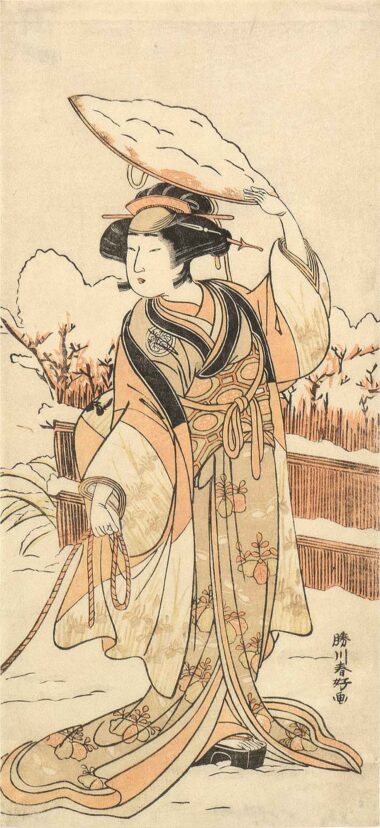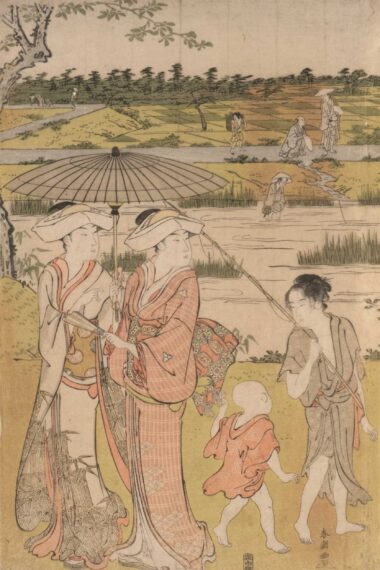Katsukawa SHUNCHŌ (1726–1792) founded the style of portraits of actors with Ippitsusai Bunchō (active from 1751–1764) and contributed to the development of actor representations ( yakusha‑e ) at. The large-format, pathetically expressive depiction of people is characteristic of his style. Shuncho directed the Katsukawa School and was a leader in all styles of actor portraits. Committed to realism, he wanted to reproduce the character traits of the actors. His endeavors towards portrait resemblance in his series of actor sheets, published in 1768, were groundbreaking. In the 1780s he mainly devoted himself to painting ( nikuhitsu-ga - painted with a brush), preferably depicting beautiful women ( bijin-ga ) and genre representations.
Katsukawa SHUNCHŌ (1726–1792) founded the style of portraits of actors with Ippitsusai Bunchō (active from 1751–1764) and contributed to the development of actor representations ( yakusha‑e ) at. The large-format, pathetically expressive depiction of people is characteristic of his style. Shuncho directed the Katsukawa School and was a leader in all styles of actor portraits. Committed to realism, he wanted to reproduce the character traits of the actors. His endeavors towards portrait resemblance in his series of actor sheets, published in 1768, were groundbreaking. In the 1780s he mainly devoted himself to painting ( nikuhitsu-ga - painted with a brush), preferably depicting beautiful women ( bijin-ga ) and genre representations.





Recent Comments